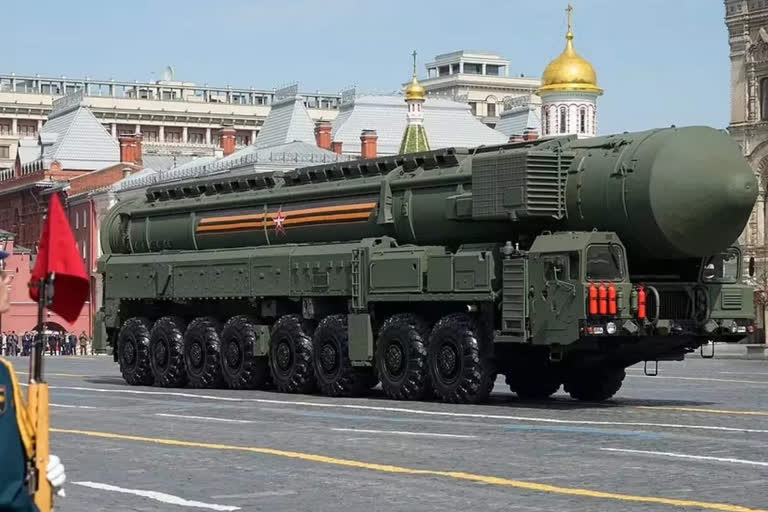New Delhi: The growing clamour and belligerent war rhetoric by major powers of the world in the backdrop of the ongoing Ukraine conflict and the threat of another one starting over Taiwan has a menacing ring to it that can be ignored only at one’s own peril particularly when nuclear powers are involved.
Because these will be conflicts that will immediately draw in the direct involvement of at least five of the nine nuclear powers. What adds another alarming dimension to the looming nuclear threat is the fact that the era of downsizing of nuclear arsenal after the end of the Cold War may have ended. The warning has been sounded by none other than SIPRI (Stockholm International Peace Research Institute).
“There are clear indications that the reductions that have characterized global nuclear arsenals since the end of the cold war have ended,” said Hans M. Kristensen, Associate Senior Fellow with SIPRI’s Weapons of Mass Destruction Programme and Director of the Nuclear Information Project at the Federation of American Scientists (FAS).
Among the world’s leading think-tanks on the weapons trade and their proliferation, SIPRI studies and analyses the current state of armaments, disarmament and international security. While the world’s stockpiled nuclear warheads declined marginally by 375 in January 2021—from 13,080 in 2021 to 12,705 in January 2022— nuclear arsenals are expected to grow over the coming decade, a SIPRI report said on Monday.
Also read: India increased military expenditure by 0.9 pc in 2021; China by 4.7 pc: SIPRI report
The marginal decline in nuke arsenal in US and Russia was due to the dismantling of warheads that had been retired from military service several years ago, the report added. “All of the nuclear-armed states are increasing or upgrading their arsenals and most are sharpening nuclear rhetoric and the role nuclear weapons play in their military strategies,” said Wilfred Wan, Director of SIPRI’s Weapons of Mass Destruction Programme. “This is a very worrying trend.”
Notably, on Sunday, Chinese defence minister Wei Fenghe scaled up the war rhetoric when he threatened of war on Taiwan which China views as part of its own territory and where the US is bent on supplying weapons to. Wei had said: “If anyone dares to split Taiwan from China, the Chinese People's Liberation Army (PLA) will have no choice but fight at any cost and crush any attempt of ‘Taiwan independence’ and safeguard national sovereignty and territorial integrity.”
China is believed to be already expanding its nuclear weapon arsenal with recent satellite images indicating the construction of more than 300 new missile silos. Moreover, added nuclear warheads are believed to have been deployed in 2021 with the induction of new mobile launchers and a submarine.
Just after the Russian military action in Ukraine had begun on February 24, President Vladimir Putin declared on February 27 that he was raising the alert status of Russia’s nuclear forces. And on June 1, Russia announced that it had begun exercising its nuclear assets in the Ivanovo region northeast of Moscow.
Also read: India's arms import dip by 33%: SIPRI
A Russian defence ministry statement had said: “Strategic (read nuclear) rocket men are working on the issues of bringing missile systems to field positions, making marches up to 100 km long, dispersing units with a change in field positions, their engineering equipment, organizing camouflage and combat security.”
About 1,000 military personnel were involved in the nuclear weapons exercise with more than 100 pieces of equipment involved. The US and Russia together account for 90 percent of the world’s nuclear arsenal, followed by seven other nations—UK, France, China, India, Israel, Pakistan and North Korea.
“Of the total inventory of an estimated 12,705 warheads at the start of 2022, about 9,440 were in military stockpiles for potential use. Of those, an estimated 3,732 warheads were deployed with missiles and aircraft, and around 2,000—nearly all of which belonged to Russia or the USA—were kept in a state of high operational alert,” the report added.



